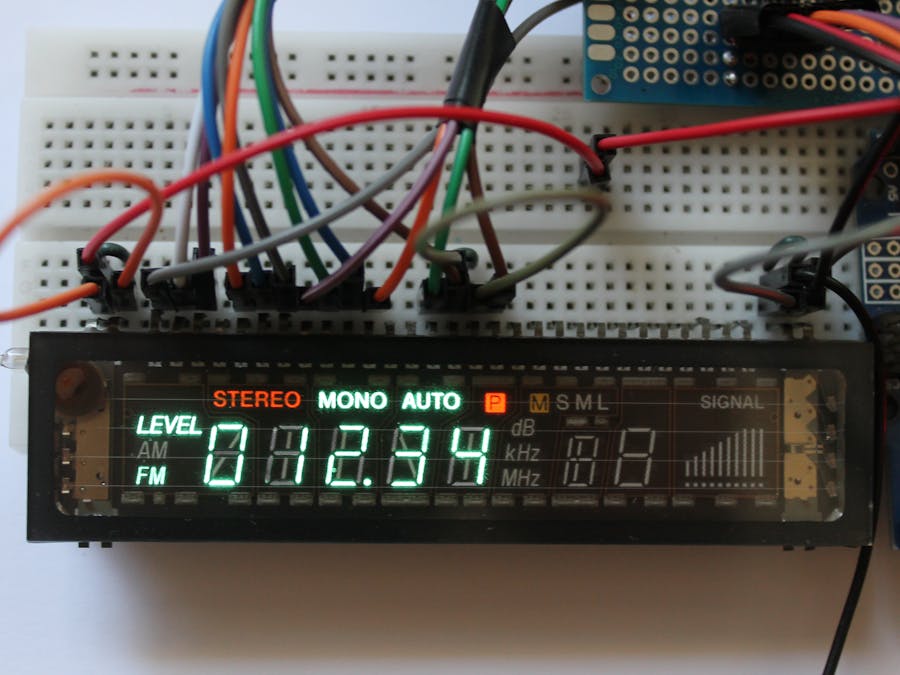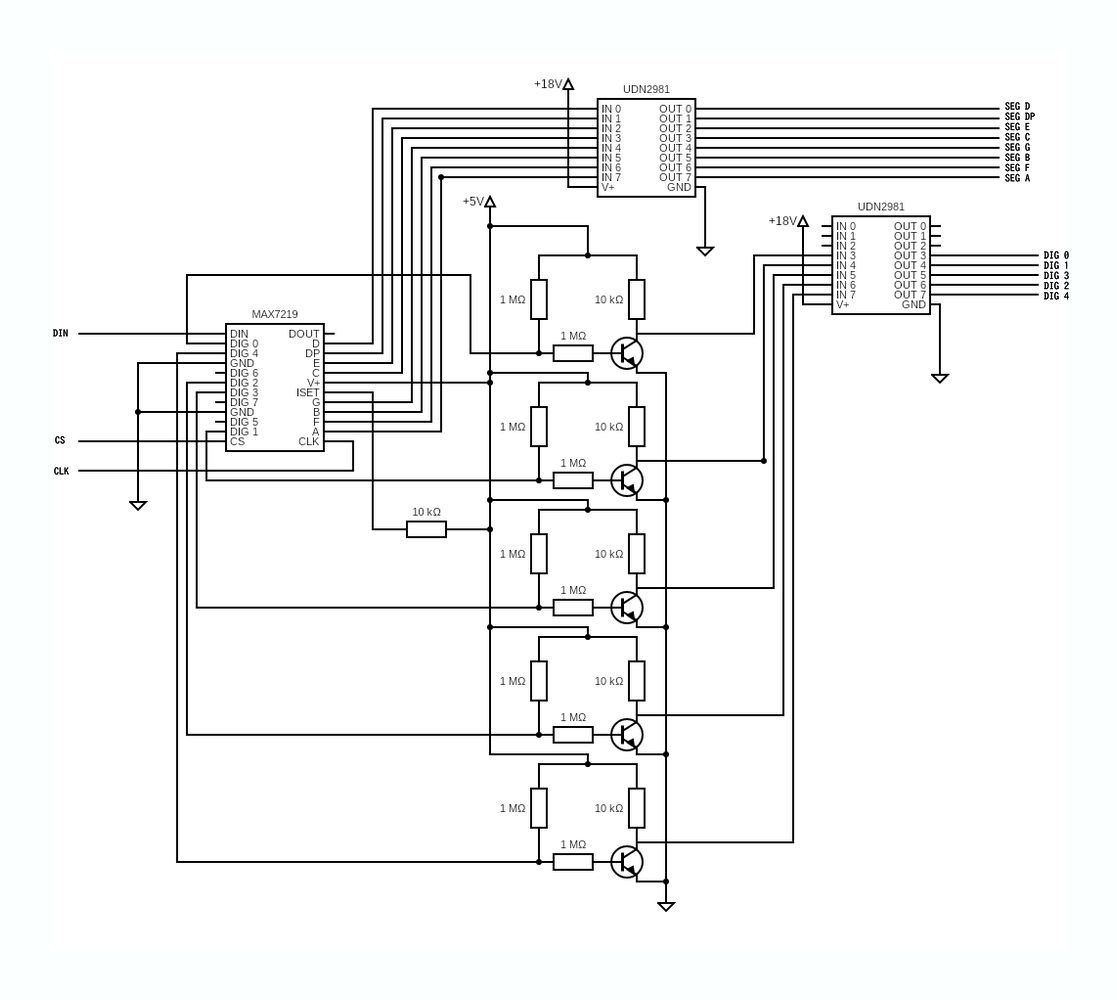You can get your hands on some very interesting components when disassembling old electronics. One such I've found was this VFD (Vacuum Fluorescent Display). Trying to reverse-engineer the controller was, however not the way to go as all ICs on the board were covered with glob-tops. So I decided to de-solder it from the control board and build a simple driver. Here's how to do it with a MAX7219 (I've had a few left from a previous LED project) and some other components.
After doing some reverse-engineering, you can figure out the pin-out of the display (MAX7219 can only be used to control up to 8 digits with 8 segments). Here's what it looks like for mine:
The filament pins (the two left-most pins) require around 3V to operate. Grids and anodes(digits and segments) both need around 18V to provide sufficient contrast.
The MAX7219 cannot be used to drive a VFD directly as the logic is a bit different from 7-segment common-cathode LED displays. Instead of pulling the currently multiplexed digit to ground, it needs to be supplied with 18V as well as its corresponding segments. The NPN transistor with a few resistors did the trick.
Finally, UDN2981s are used to supply the segments and digits with 18V. Its inputs are triggered by the outputs of MAX721
The final circuit schematic is in the Schematics section below.






_ztBMuBhMHo.jpg?auto=compress%2Cformat&w=48&h=48&fit=fill&bg=ffffff)









_1x_bGT19vVAby.png?auto=compress%2Cformat&w=40&h=40&fit=fillmax&bg=fff&dpr=2)


Comments
Please log in or sign up to comment.